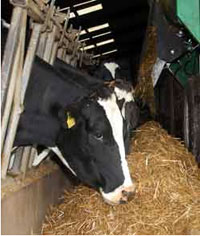Energy and protein feed markets finally settle down

The main factors controlling the feed markets at present are the weather in key growing regions and concern over low global stock volumes, reports KW Alternative Feeds’ Colin Shepherd.
Despite some ongoing uncertainty around future Chinese demand, with the true state of China’s economy still not known, prices have at last begun to settle back in recent weeks.
Although varying between regions, recent rains across Germany and the UK have helped ease concerns about further losses in the EU wheat crop, while good planting and crop establishment figures from the US have also helped wheat and corn markets to fall strongly. Other good news is that the lifting of the Russian export ban may help to ease overall wheat supply issues.
Against this, demand from the bioethanol industry continues to grow (although the future of bioethanol production subsidies in the US is the subject of an upcoming vote by the Senate), while drought-affected cereal crops in China may yet result in increased import demand for both corn and wheat.
Despite this, old crop wheat dropped £25/t last week, with new crop values down by about £18/t. Even at these newer prices, however, liquid feeds (at £145-150/t) still remain a better option than cereals, with soya hulls in the late £150/t the best choice for digestible fibre.
Maize gluten is a great value energy-plus-protein feed at £182-187/t, and worth securing now while supplies and prices are favourable.
Follow market movements closely in the coming weeks as good opportunities to buy both protein and energy feeds are already appearing.
In contrast to the recent fall in the value of energy feeds, soya bean meal has been relatively stable, trading in a range between the mid £260/t (ex-port) and the high £270/t for the past two months. Although there have been weather concerns in the US, the soya bean planting window remains open.
The latest USDA report also increased the expected size of the Brazilian soya bean crop to 74.5 million tonnes (mt) – the Brazilian Government is predicting 75.0mt – so there’s still been no switch of Chinese demand to US soya beans. This has caused the USDA to raise estimates for soya bean year-end carry-out stocks in the US.
The balance between supply and demand is therefore more closely matched than for most of the past year, with winter soya bean meal forward contracts for Nov-Apr delivery currently available in the mid £280/t. Compared to about £320/t on the spot market in early 2011, it shows that taking at least some cover for the winter would be a sensible option for many.
The reality, however, is that any bad weather news, or increased Chinese demand, could cause the market to spring back to about £290-300/t. A recent comment from Oil World, for example, claimed that global 2011-12 soya bean consumption is likely to exceed production by about 4mt.
Rapemeal also remains expensive compared to other competing products, with demand for rapeseed and rapeseed oil the main drivers. European crops continue to suffer due to drought, with growing concern that any rain that now falls may be too little, too late. Current estimates put the European new crop at 1-2mt below last year.
As a result, high protein liquid feeds are a more cost-effective source of rumen degradable protein, along with the various distillers’ feeds, while rumen-protected soya bean meal is a better value source of rumen-bypass protein (digestible undegraded protein, DUP).
For those looking to buy, focus on catching the dips in the market. A recent fund sell-off earlier in the month saw soya bean meal prices drop about £5/t for a day or so, creating a great opportunity to buy forward at a better price.
But don’t wait too long, as it appears there are a lot of buyers waiting in the wings, and demand for proteins could pick up quickly. Any dip of £5/t or more for soya bean meal from here is worth considering, covering perhaps up to 75% of summer requirements, and maybe 50% for the winter.
* Prices correct at the time of writing, all prices quoted are for 29t tipped bulk loads delivered on-farm within 50 miles of origin. Prices subject to change.
